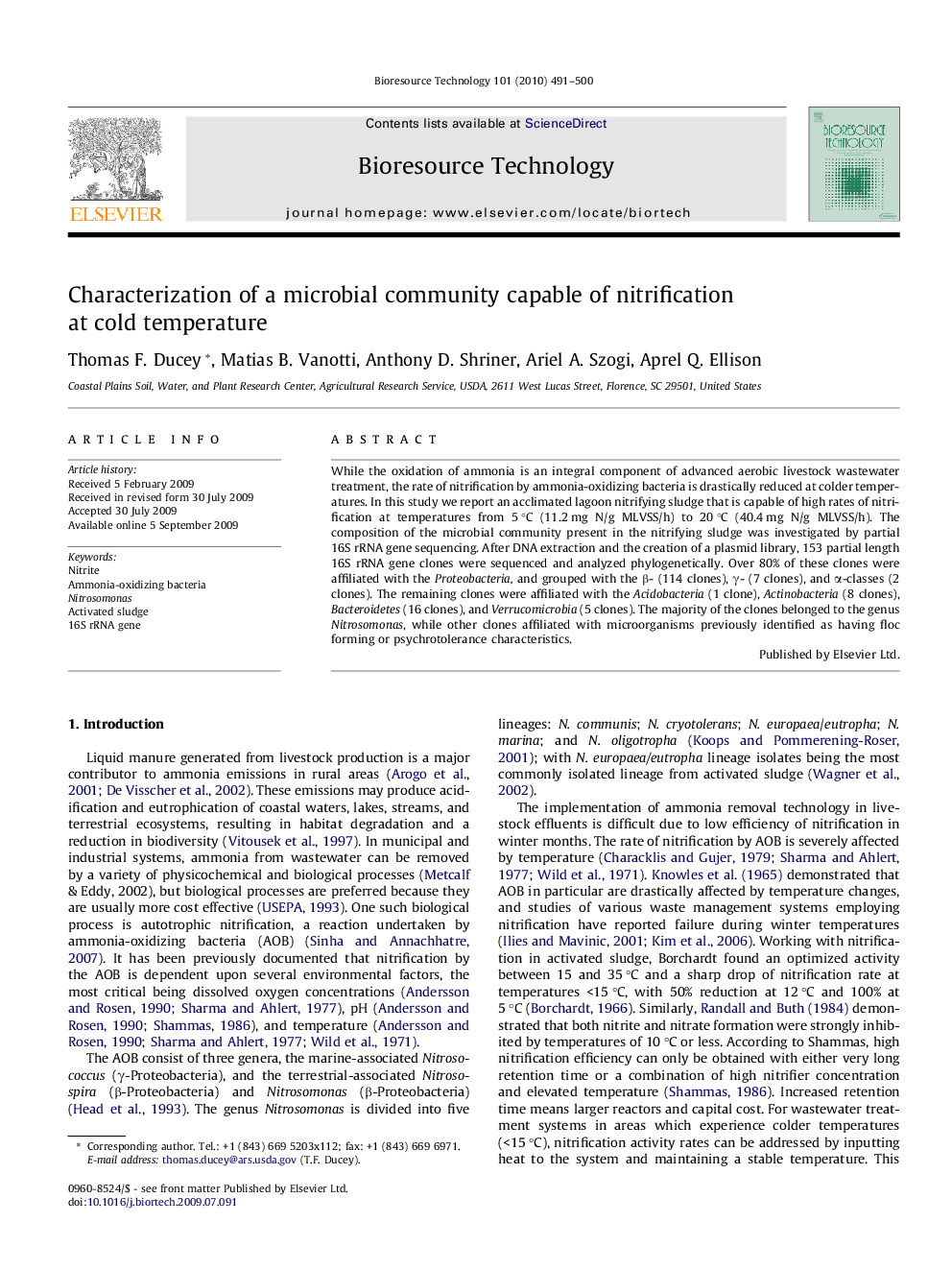| Article ID | Journal | Published Year | Pages | File Type |
|---|---|---|---|---|
| 684164 | Bioresource Technology | 2010 | 10 Pages |
While the oxidation of ammonia is an integral component of advanced aerobic livestock wastewater treatment, the rate of nitrification by ammonia-oxidizing bacteria is drastically reduced at colder temperatures. In this study we report an acclimated lagoon nitrifying sludge that is capable of high rates of nitrification at temperatures from 5 °C (11.2 mg N/g MLVSS/h) to 20 °C (40.4 mg N/g MLVSS/h). The composition of the microbial community present in the nitrifying sludge was investigated by partial 16S rRNA gene sequencing. After DNA extraction and the creation of a plasmid library, 153 partial length 16S rRNA gene clones were sequenced and analyzed phylogenetically. Over 80% of these clones were affiliated with the Proteobacteria, and grouped with the β- (114 clones), γ- (7 clones), and α-classes (2 clones). The remaining clones were affiliated with the Acidobacteria (1 clone), Actinobacteria (8 clones), Bacteroidetes (16 clones), and Verrucomicrobia (5 clones). The majority of the clones belonged to the genus Nitrosomonas, while other clones affiliated with microorganisms previously identified as having floc forming or psychrotolerance characteristics.
